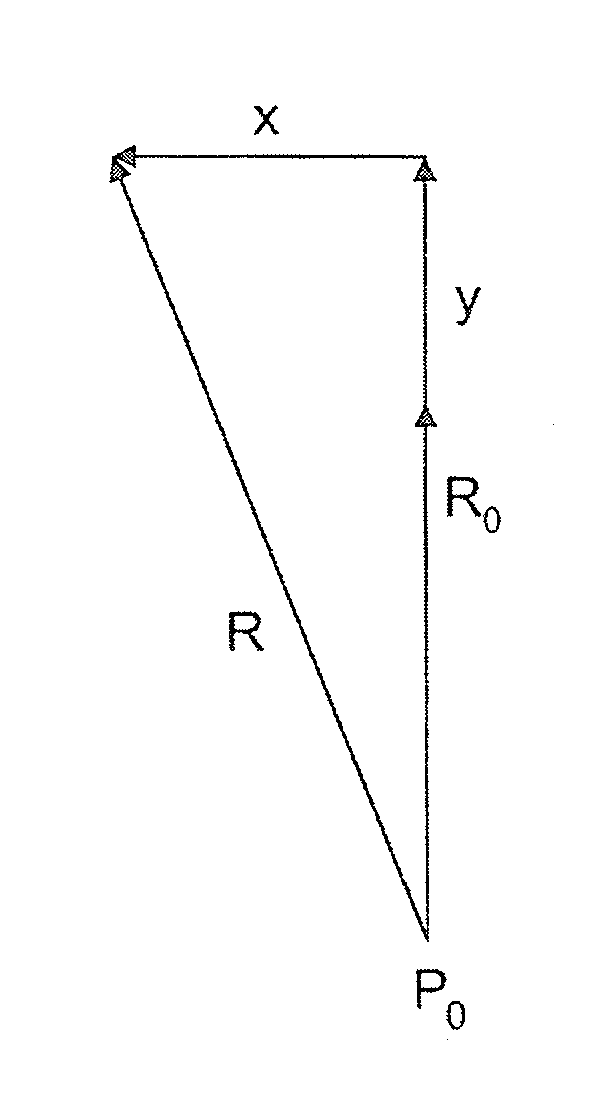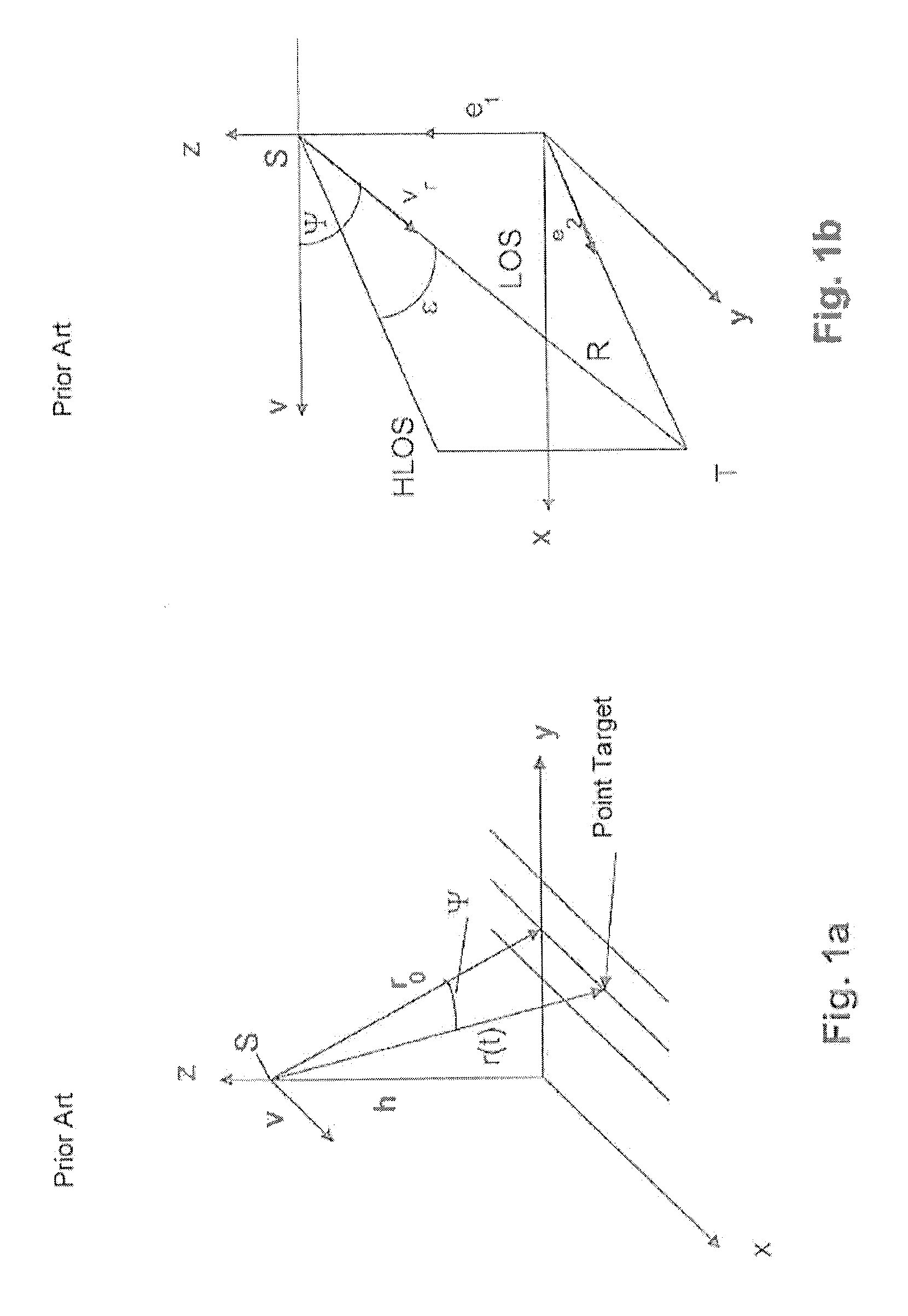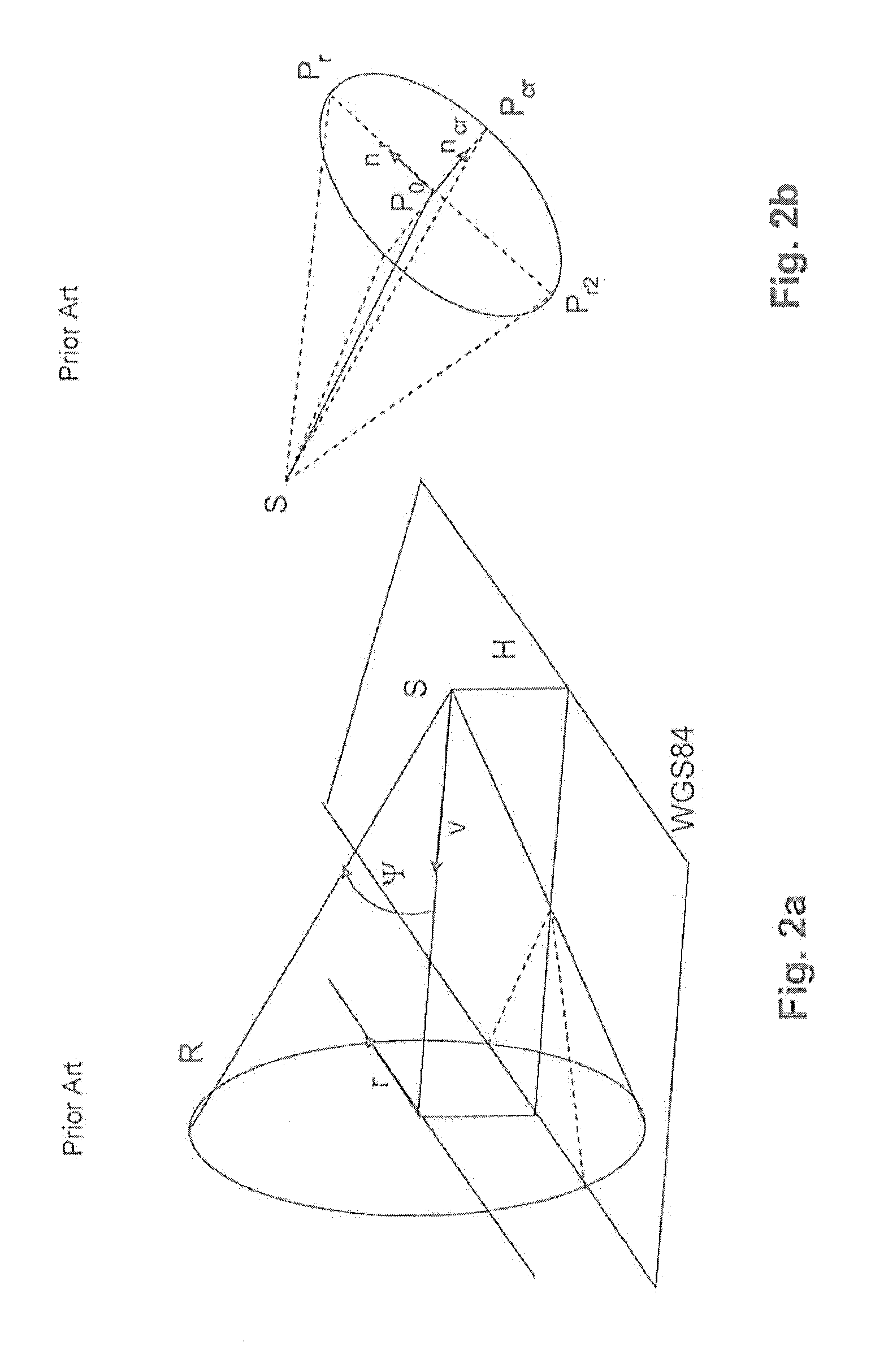Method for Determining the Geographic Coordinates of Pixels in SAR Images
a technology of geographic coordinates and sar images, applied in the direction of using reradiation, radio wave reradiation/reflection, measurement devices, etc., can solve the problems of azimuth errors, distortion effects, and inability to accurately determine the position of targets at great distances (20 km-100 km), so as to reduce the error in position determination
- Summary
- Abstract
- Description
- Claims
- Application Information
AI Technical Summary
Benefits of technology
Problems solved by technology
Method used
Image
Examples
Embodiment Construction
[0026]Obtaining distance information from an SAR image proceeds as follows. In an SAR system, the range gate is set for the generation of images. This range gate determines the distance between the SAR sensor and the resolution cell on the ground that corresponds to the center of the SAR slant range image. Hereafter this pixel is identified as the center pixel. Once a pixel has been determined as the target, the distance to the resolution cell on the ground corresponding to the pixel can be calculated. This is illustrated in FIG. 3.
[0027]The range gate is denoted in FIG. 3 as R0. The distance to the target pixel is denoted by R. If the pixel coordinates x and y of the target pixel are provided relative to the center pixel, the distance R to this pixel can be computed, as follows
R=√{square root over ((δxx)2+(δyy+R0)2)}{square root over ((δxx)2+(δyy+R0)2)} (1)
[0028]The parameters δx and δy denote the resolution of the SAR slant range image in the azimuth direction or the resolution i...
PUM
 Login to View More
Login to View More Abstract
Description
Claims
Application Information
 Login to View More
Login to View More - R&D
- Intellectual Property
- Life Sciences
- Materials
- Tech Scout
- Unparalleled Data Quality
- Higher Quality Content
- 60% Fewer Hallucinations
Browse by: Latest US Patents, China's latest patents, Technical Efficacy Thesaurus, Application Domain, Technology Topic, Popular Technical Reports.
© 2025 PatSnap. All rights reserved.Legal|Privacy policy|Modern Slavery Act Transparency Statement|Sitemap|About US| Contact US: help@patsnap.com



